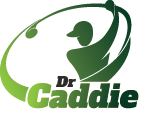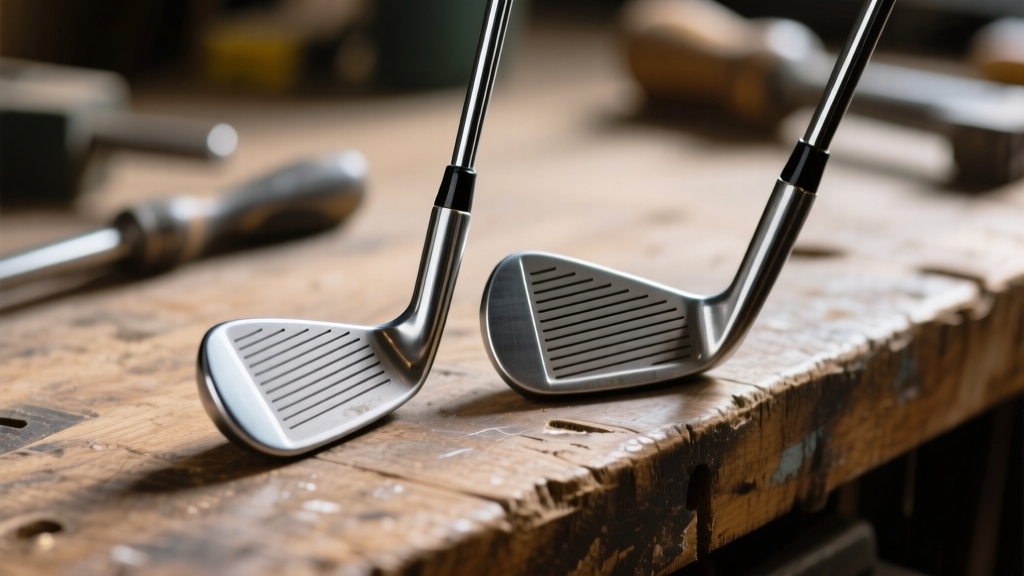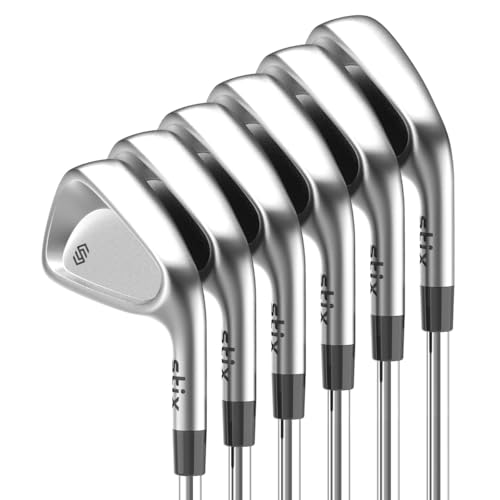When choosing between blades and cavity back irons, know that blades offer a compact, forged design with a small sweet spot. This gives you precise shot control, high spin, and a low, penetrating trajectory, ideal if you have consistent swing speed and refined technique.
Cavity backs have perimeter weighting, larger sweet spots, and higher MOI, providing forgiveness, stability, and higher launch. They are perfect for mid- to high-handicap players. Understanding these contrasts can refine your club selection and performance strategy.
- COMPLETE IRON SET: The Roxor Golf RXR Iron set features 7 irons from 4 to PW. Stiff Flex Shafts….
- SLEEK SOLID BLADE DESIGN: Thin top line for ball first contact confidence with exceptional…
- MID-SPLIT MUSCLE DESIGN: Features a lower center of gravity for high launch, great spin, control and…
- Complete 6-Iron Set: Includes 5-iron through pitching wedge – perfect core set for dialing in…
- Cavity Back Design for Forgiveness: Game-improvement profile with perimeter weighting to increase…
- Premium Steel Shafts: Offer strong feel and control for players with moderate to fast swing speeds
- Key Takeaways
- Blades vs Cavity Back Irons: Complete Performance Breakdown
- Design and Construction Differences
- Forgiveness and Sweet Spot Comparison
- Performance and Shot Control Characteristics
- Target User and Skill Level Suitability
- Playability and Feel Variations
- Appearance and Aesthetic Appeal
- Weight Distribution and Its Impact
- Benefits of Blended Iron Sets
- Transitioning Between Iron Types
- Frequently Asked Questions
- How Do Blade and Cavity Back Irons Differ in Cost?
- Are There Differences in Shaft Compatibility Between Blade and Cavity Back Irons?
- Which Iron Type Is Better for Playing in Windy Conditions?
- How Do Blade and Cavity Backs Affect Club Durability?
- Do Blades or Cavity Backs Require Different Maintenance Routines?
- Bottom Line: Choosing Between Blades and Cavity Back Irons
Key Takeaways
- Blades have a compact, thin design with weight concentrated behind the sweet spot, while cavity backs feature perimeter weighting for forgiveness.
- Cavity backs offer higher MOI and are more forgiving on mishits, whereas blades require precise strikes due to smaller sweet spots.
- Blades produce a lower, penetrating ball flight with higher spin, while cavity backs promote higher launch with more consistent, lower spin.
- Blades suit low-handicap golfers seeking control and feedback; cavity backs are ideal for beginners and mid-handicappers needing stability and ease.
- Transitioning from cavity backs to blades demands refined swing mechanics and adjustment to decreased forgiveness and more precise shot shaping.
Blades vs Cavity Back Irons: Complete Performance Breakdown
| Feature | Blade Irons | Cavity Back Irons |
|---|---|---|
| Sweet Spot Size | Small, concentrated | Large, expanded |
| Forgiveness Level | Low – demands precision | High – mishit tolerance |
| Shot Control | Exceptional workability | Limited shot shaping |
| Ball Flight | Low, penetrating | High, ascending |
| Spin Control | High, variable spin | Lower, consistent spin |
| Feedback Quality | Direct, tactile response | Muted, comfortable feel |
| Best Player Type | Low handicap golfers | Mid to high handicap |
| Distance Consistency | Varies with strike quality | More consistent yardages |
| Learning Curve | Steep, requires skill | Gradual, beginner-friendly |
| Wind Performance | Excellent trajectory control | Higher launch affected by wind |
| Price Range | $1,200 – $2,000 | $800 – $1,500 |
| Durability | Requires careful maintenance | More resilient construction |
Design and Construction Differences
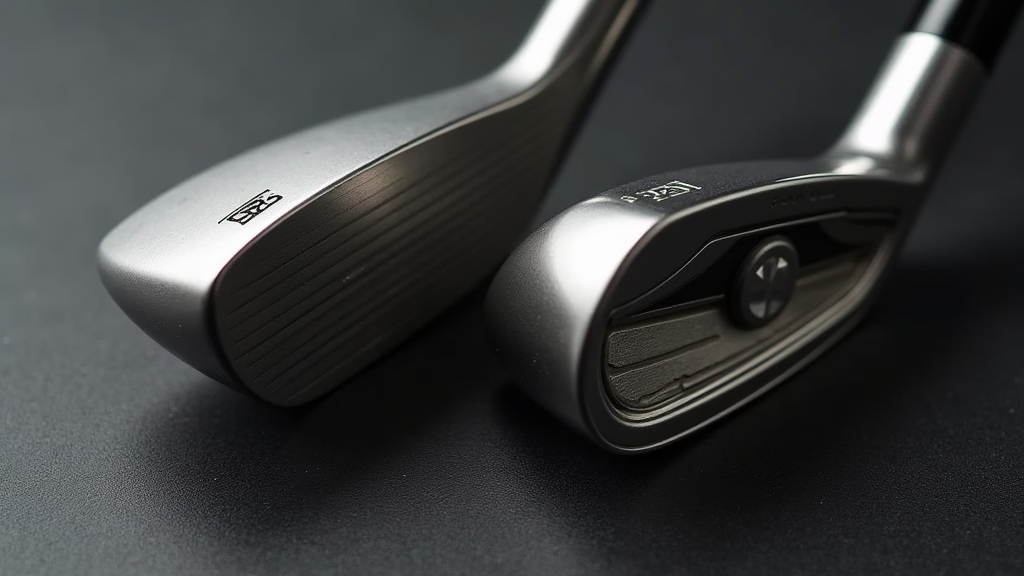
Although both blade and cavity back irons serve the same fundamental purpose, their design and construction differ considerably, impacting performance and feel.
Blades feature a solid back and a thinner profile, forged from premium materials, which enhances structural integrity and offers precise control.
The forging process allows for exact material density manipulation, resulting in a thinner face that delivers superior feedback and spin control.
In contrast, cavity back irons have a thicker, rounded club head with weight distributed around the perimeter, boosting stability.
These irons often feature a cast or forged construction, contributing to a lower center of gravity that aids launch.
Their thicker top line, increased offset, and cavity design reduce vibration, providing a modern aesthetic and improved feel without compromising durability.
Additionally, cavity backs offer more forgiveness on off-center hits due to their larger sweet spot and perimeter weighting.
Forgiveness and Sweet Spot Comparison
When you strike the ball off-center, the level of forgiveness your iron provides substantially influences the shot’s outcome.
The forgiveness of your iron greatly affects the result of off-center shots.
Cavity back irons feature perimeter weighting that increases moment of inertia (MOI), notably reducing clubhead twisting on mishits. This design is traditionally achieved through a casting process, which allows for the scooped-out cavity in the back of the iron head. The increased MOI in cavity backs is similar in concept to how insert putters use perimeter weighting to enhance performance on off-center hits.
This design enlarges the sweet spot, allowing better retention of ball speed and directional control, even with imperfect contact.
In contrast, blade irons have a smaller, concentrated sweet spot and low MOI, resulting in greater distance loss and accuracy penalties on off-center strikes.
Consequently, blades demand precise ball striking to perform ideally.
If you seek consistency and higher miss-hit tolerance, cavity backs offer a clear advantage by minimizing negative effects from mishits.
Blades provide less forgiveness, requiring refined skill to avoid costly shot deviations.
Performance and Shot Control Characteristics
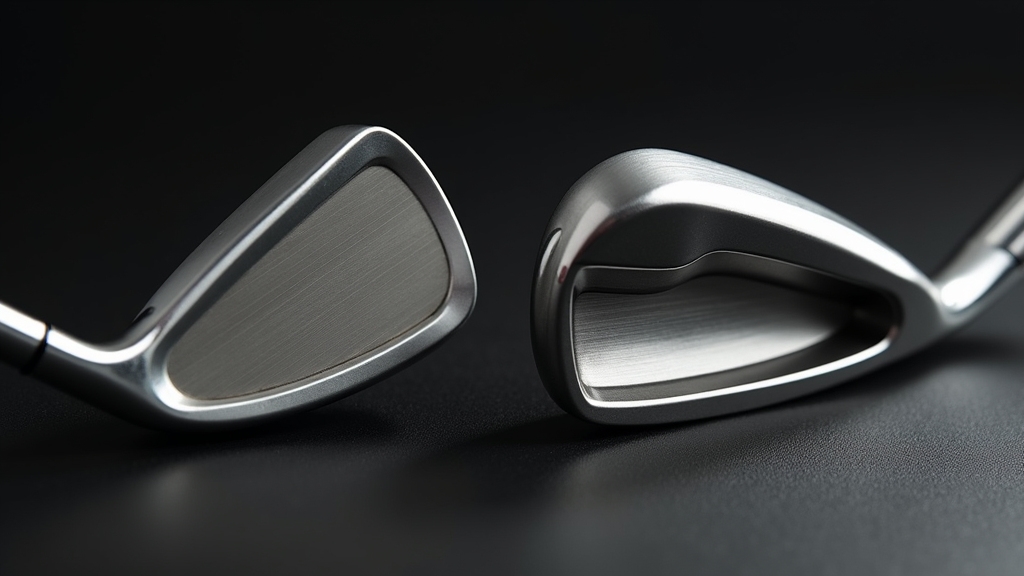
You’ll notice that blades provide superior shot control precision. This means you can really manipulate spin and trajectory with great detail, similar to how spin influences ball trajectory in golf balls.
On the other hand, cavity back irons tend to sacrifice a bit of that control. However, they offer enhanced forgiveness, which can help maintain your performance even when you don’t hit the ball perfectly. Cavity back irons feature perimeter weighting that moves mass low and outward, increasing stability and forgiveness.
So, it’s essential to understand how these design differences affect your ball flight and spin. This knowledge is key to selecting the right iron for your game.
Ultimately, it comes down to what suits your style of play best!
Shot Control Precision
Because shot control precision hinges on consistent, centered contact, blade irons deliver unparalleled feedback and workability for skilled players who demand exact trajectory and spin manipulation.
Their compact, muscle-back design maximizes tactile response, enabling you to detect minute variances in impact location and adjust swing mechanics accordingly. This precision lets you intentionally shape shots, executing draws, fades, and controlling launch angles with superior spin rates for enhanced stopping power on greens.
The muscle back construction concentrates weight behind the center of the clubface, which is essential for this level of control. Additionally, blade irons typically feature lower loft angles, contributing to their ability to produce controlled distance and trajectory.
However, off-center strikes considerably degrade control and accuracy, requiring disciplined ball striking. In contrast, cavity backs prioritize forgiveness over shot-shaping ability, promoting straighter trajectories with higher launch but less nuanced spin control.
Forgiveness Impact
Although blade irons offer exceptional feedback and control, their smaller sweet spot demands highly precise impact location to achieve ideal performance. Choosing the correct grip size can also influence how well you control these clubs and maintain accuracy.
When you mishit with blades, expect significant loss in distance and accuracy due to their low moment of inertia (MOI) and concentrated mass, which amplify clubhead twisting.
In contrast, cavity back irons redistribute weight to the perimeter, expanding the sweet spot and increasing MOI. This design emphasis on forgiveness makes cavity backs more suitable for developing swings and beginners. Additionally, cavity back irons often come with midsize grips that provide enhanced stability and comfort during swings.
This design reduces performance degradation on off-center hits, helping you maintain ball speed and directional stability.
As a result, cavity backs deliver more consistent shot outcomes across varied strike locations, making them ideal for golfers who struggle with precision.
While blades reward exactness with direct feedback, cavity backs forgive errors, enhancing your scoring potential and reducing costly mishits.
Trajectory and Spin
Beyond forgiveness, the design differences between blades and cavity back irons directly influence trajectory and spin characteristics.
Blades have concentrated mass behind a smaller sweet spot, producing higher spin rates and lower, penetrating ball flights. Players with larger hands or arthritis might consider midsize or jumbo grips to enhance comfort and control when using blades.
Cavity backs redistribute weight to the perimeter, increasing MOI and promoting higher launch with reduced spin. You’ll find blades offer superior spin control for shaping shots but require precise strikes.
Cavity backs provide more consistent spin and trajectory on off-center hits, ideal if you struggle with contact.
Additionally, modern irons often incorporate variable face thickness and other technologies to enhance power and flex, further differentiating their performance characteristics.
| Feature | Blades | Cavity Backs |
|---|---|---|
| Trajectory | Low, penetrating | High, ascending |
| Spin | High, variable | Lower, consistent |
| Shot Control | Precise shaping ability | Forgiving, straighter |
Target User and Skill Level Suitability
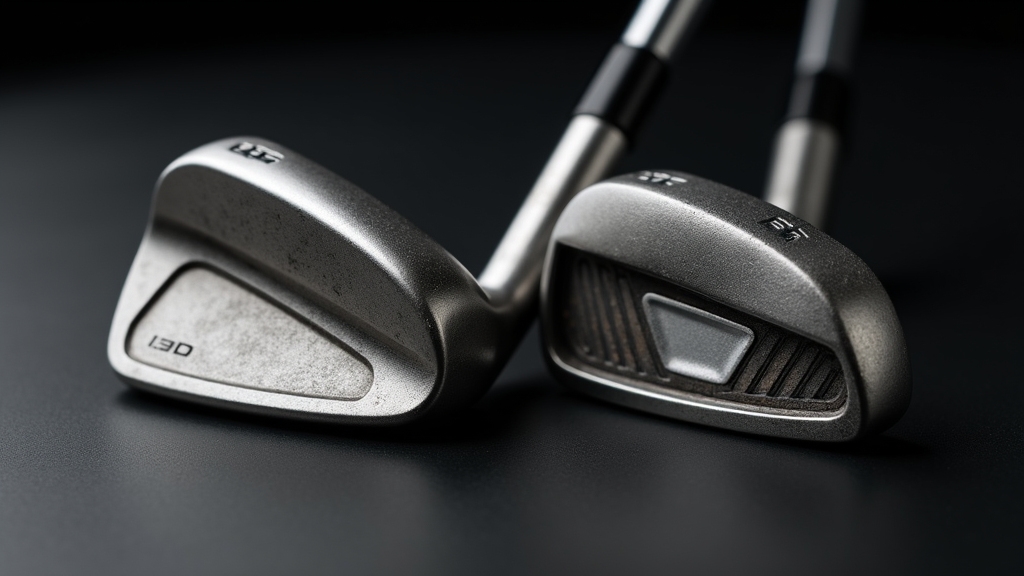
Blade irons are really designed for low-handicap golfers who are looking for precise shot control and consistent center strikes. If you’re just starting out or have a bit of experience, cavity backs are a better fit for you. They offer the forgiveness and stability that can help improve your accuracy and build your confidence on the course.
Cavity back irons typically have a thicker sole and perimeter weighting that make them easier to hit and more forgiving on off-center strikes. Proper swing path and body alignment are also crucial factors that influence how effectively you can use these clubs.
Once your ball striking starts to get more reliable, you might want to think about transitioning from cavity backs to blades. This switch can really enhance your ability to shape shots and give you better feedback on your swings.
Skill Level Comparison
When choosing between blades and cavity back irons, your skill level plays a crucial role in determining which design suits you best.
If you’re a beginner or mid-handicap player, cavity backs offer enhanced forgiveness through perimeter weighting and larger sweet spots. They compensate for inconsistent swings and mishits. This modern build helps error correction and consistency. Their design also allows for a lower center of gravity, which aids in achieving a higher and more consistent ball flight.
Their lower center of gravity and wider soles help maintain consistent ball flight, boosting confidence.
Conversely, blades demand precise, repeatable ball striking and higher swing speeds. Their smaller clubhead and muscle-back design provide superior feedback and shot-shaping control but penalize off-center hits severely.
Low handicap or scratch golfers benefit from the blades’ ability to manipulate trajectory and spin for strategic play.
Ultimately, your proficiency dictates whether you prioritize forgiveness and consistency or precision and workability in your iron selection.
Player Type Preferences
Although both blades and cavity back irons serve distinct purposes, your player type and skill level ultimately determine which design aligns best with your game.
If you’re a low handicap or professional golfer, blades offer precise control over spin and trajectory. They reward your consistent ball striking and shot-shaping skills, but they demand exact technique and are less forgiving on off-center hits.
Conversely, if you’re a mid to high handicap or recreational player, cavity backs provide enhanced forgiveness and easier distance control. They accommodate less consistent swings and their design compensates for off-center strikes, offering higher loft and improved performance with less effort.
Additionally, understanding your handicap can help you decide which type of iron best suits your skill level and scoring goals.
Improvement and Transition
Because cavity back irons feature advanced weight distribution and larger clubheads, they considerably enhance forgiveness and ease of play. This makes them ideal for golfers shifting from blades. The transition from persimmon woods and blades to modern cavity back irons reflects significant technological progress in club design. Properly organizing the bag and distributing weight can help maintain comfort when carrying new sets.
You’ll notice less distance loss on mishits due to perimeter weighting and a larger sweet spot. This benefits high handicappers or those struggling with consistency.
While blades offer superior shot-shaping control and feedback, cavity backs provide more stable distance and accuracy, especially on off-center strikes.
Beginners and intermediate players find cavity backs easier to launch thanks to thicker soles and offset designs.
If you’re transitioning, consider blended sets combining blades in short irons for precision and cavity backs in long irons for forgiveness.
This approach supports skill development while balancing control and playability during your progression.
Playability and Feel Variations
Since playability hinges on forgiveness and control, understanding the differences between cavity back and blade irons is essential. Cavity backs offer a larger sweet spot and higher moment of inertia (MOI), improving forgiveness and consistency on off-center strikes.
Blades, with concentrated weight behind the center, demand precise ball striking but deliver superior shot-shaping capabilities. Feel variations also impact playability:
Blades require precise strikes yet offer enhanced control and exceptional shot-shaping potential.
- Blades provide sharp, crisp feedback, allowing you to sense exact contact points for refined shot adjustments.
- Cavity backs mute vibrations, offering a softer, less informative feel on impact.
- The muscle back design of blades enhances tactile response, favored by low-handicap players.
- Cavity backs absorb mishit vibrations, making them more forgiving but less precise in feedback.
Choosing between these depends on your skill level and preference for control versus forgiveness. Additionally, matching iron design to your swing characteristics can optimize energy transfer and shot consistency, highlighting the importance of equipment fitting.
Appearance and Aesthetic Appeal
Understanding how blades and cavity back irons differ in playability and feel naturally leads to examining their visual characteristics, which often influence player confidence and club selection.
Blades present a sleek, compact profile with a thin top line and minimal offset, projecting precision and tradition. In contrast, cavity backs showcase larger, thicker heads with pronounced cavities and offset, signaling forgiveness and modern design. The forged construction of blade irons contributes to their precise shaping and compact form.
| Feature | Blades | Cavity Back Irons |
|---|---|---|
| Clubhead Size | Smaller, compact | Larger, bulkier |
| Top Line Thickness | Thin, minimalistic | Thick, forgiving |
| Offset | Minimal to none | Noticeable, aids squaring ball |
| Visual Appeal | Classic, precision-focused | Modern, confidence-inspiring |
These visual differences affect how you perceive control versus forgiveness.
Weight Distribution and Its Impact
Although blades and cavity back irons may look similar at a glance, their weight distribution fundamentally alters how they perform and feel during your swing. Blades concentrate mass behind the sweet spot with a higher, centered center of gravity (CG), demanding precise contact and rewarding consistent strikes with solid feedback.
Blades focus weight behind the sweet spot, requiring precision and offering solid feedback on well-struck shots.
In contrast, cavity backs redistribute weight around the perimeter, lowering and deepening the CG to enhance forgiveness and reduce spin on off-center hits. This redistribution also influences the center of gravity displacement, which plays a role in swing stability and shot accuracy.
Consider these key impacts on your play:
- Blades offer balanced, muscleback weighting, promoting a penetrating ball flight for skilled shot shaping.
- Cavity backs increase moment of inertia (MOI), stabilizing clubhead rotation on mishits.
- Heavier heads can alter tempo, with blades feeling more solid but less forgiving.
- Adjustable weighting in cavity backs lets you fine-tune CG and swing weight, optimizing feel without considerably changing swing speed.
Benefits of Blended Iron Sets
Beyond weight distribution and forgiveness, blending different iron types within a set offers strategic advantages that enhance overall performance.
You gain improved distance and precision gapping by combining longer irons with stronger lofts and forgiveness with shorter irons focused on tighter loft intervals and scoring control.
This corrects widening yardage gaps caused by evolving driver distances. Forgiving long irons reduce inconsistent ball flight and scoring risks, boosting your confidence in longer shots.
Additionally, blended sets optimize trajectory and spin rates, ensuring consistent launch angles and smooth shot height modulations throughout the set.
Personalized configurations accommodate your swing speed and tendencies, often using cavity back designs in long irons and blade-like precision in scoring clubs.
This tailored approach maximizes your scoring potential while maintaining consistent feel and appearance for reliable feedback. Nearly 80% of Tour pros use blended iron sets, combining different models to elevate their game.
Transitioning Between Iron Types
When you switch from cavity back irons to blades, you face a steep learning curve that demands refined ball striking and swing consistency.
Blades require precise contact due to smaller clubheads and offer less forgiveness. Expect an initial drop in performance as you adapt. Because blades have a smaller sweet spot, mishits will be more noticeable compared to cavity back irons.
Blades demand exact strikes with less forgiveness, so anticipate a performance dip during your adjustment period.
To transition effectively, focus on:
- Refining swing mechanics to ensure repeatable, solid strikes with the smaller sweet spot.
- Developing shot-shaping skills for better trajectory and spin control.
- Adjusting ball position, tee height, and angle of attack to optimize blade performance.
- Managing psychological challenges by embracing narrower margins of error and building confidence through incremental improvements.
This process necessitates technical adjustments in tempo, sequencing, and equipment fitting to fully exploit blade irons’ capabilities.
Frequently Asked Questions
How Do Blade and Cavity Back Irons Differ in Cost?
You’ll find blade irons generally cost 15–30% more than cavity backs, often ranging from $1,200 to $2,000.
This premium price stems from their specialized forging process and use of high-quality materials, which demand skilled labor and longer production times.
In contrast, cavity backs usually cost between $800 and $1,500 due to their more cost-effective manufacturing methods, such as casting or simpler forging, and design focused on perimeter weighting for forgiveness.
Are There Differences in Shaft Compatibility Between Blade and Cavity Back Irons?
You’ll notice shaft compatibility varies distinctly between blade and cavity back irons.
Blades demand stiffer, premium shafts, think high-modulus graphite or steel, that offer precise feedback and control.
Cavity backs embrace more flexible, lighter shafts to boost forgiveness and swing speed.
Adjustments in shaft length and lie angles are more aggressive with blades, while cavity backs favor moderate, factory-set specs.
Which Iron Type Is Better for Playing in Windy Conditions?
Blades are better for windy conditions if you can strike consistently. Their lower ball flight and minimal offset reduce wind interference, letting you control trajectory and spin precisely.
You can hit penetrating shots that cut through gusts. However, if your swing lacks consistency, cavity backs provide forgiveness and maintain distance despite mishits.
But they launch higher shots that are more affected by wind.
Choose blades for control, cavity backs for forgiveness under wind pressure.
How Do Blade and Cavity Backs Affect Club Durability?
Think of blades as a sharp scalpel. Precise but demanding careful handling. Their forged soft carbon steel offers intrinsic durability but concentrates wear at the sweet spot, risking quicker groove degradation if you mishit.
Cavity backs, with multi-piece construction and perimeter weighting, spread impact forces. This reduces stress and enhances longevity. Their harder alloys and advanced materials often resist scratches better, making them more forgiving and durable for varied skill levels and play styles.
Do Blades or Cavity Backs Require Different Maintenance Routines?
Yes, blades and cavity backs require different maintenance routines.
You’ll need to clean blades gently with microfiber cloths and soft brushes to avoid scratching their thin faces. Drying them carefully is essential to prevent rust.
Cavity backs tolerate more vigorous cleaning, including brushing cavities to remove dirt.
Both need frequent cleaning and thorough drying after use, but blades demand more frequent rust inspections and protective coatings to maintain their delicate forged metal surfaces.
Bottom Line: Choosing Between Blades and Cavity Back Irons
Choosing between blades and cavity back irons is like selecting a precision scalpel versus a versatile Swiss Army knife. Blades offer unmatched control and feedback for skilled players, while cavity backs provide forgiveness and consistency.
Understanding their design, weight distribution, and playability helps you match irons to your game. Just as a surgeon trusts a scalpel’s precision, you’ll trust blades for shot shaping. Cavity backs ensure you stay in the fairway when consistency is key.
- PLAYERS LOOK AND DESIGN : Sleek design includes thin to medium top line and minimal offset to suit a…
- BETTER FEEL AT IMPACT : 431 Stainless steel head design mixed with a computer designed, non-slip…
- SOLID BLADE CONSTRUCTION : Allows for more distance control and the ability to hit draws and fades…
- Complete 6-Iron Set: Includes 5-iron through pitching wedge – perfect core set for dialing in…
- Cavity Back Design for Forgiveness: Game-improvement profile with perimeter weighting to increase…
- Premium Steel Shafts: Offer strong feel and control for players with moderate to fast swing speeds
Last update on 2025-12-12 / Affiliate links / Images from Amazon Product Advertising API
